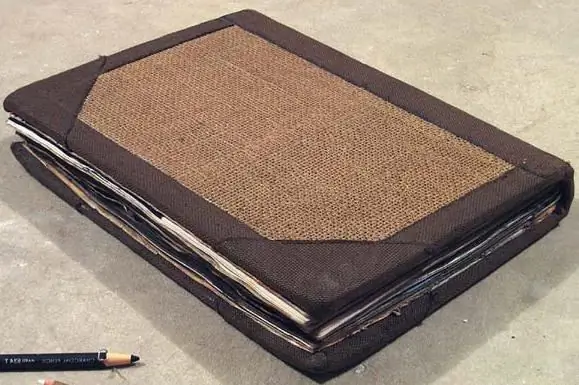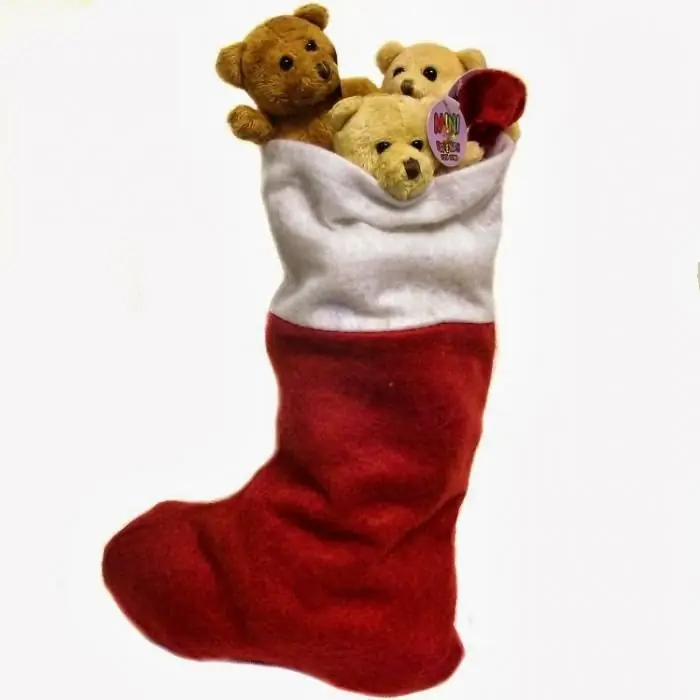
Inhaltsverzeichnis:
- Autor Sierra Becker [email protected].
- Public 2024-02-26 04:43.
- Zuletzt bearbeitet 2025-01-22 22:11.
Quilling ist eine wundervolle und unglaublich aufregende Kunst. Menschen, die Quilling-Paneele an der Wand sehen, können nicht verstehen, wie es möglich ist, aus dünnen Papierstreifen ein so schönes Muster zu machen. In der Tat erfordert diese Technik gewisse Fähigkeiten und Fertigkeiten, da völlig unterschiedliche Figuren und Bildelemente aus demselben Streifen gerollt werden können.
Zukünftige professionelle Meister beginnen mit dem Training mit einfachen Blütenblättern und Blättern und verfeinern ihre Fähigkeiten mit Quilling-Haken, Kamm und Lineal. Wir werden etwas später in diesem Artikel über den Zweck der einzelnen Tools sprechen. Außerdem lernen Sie, wie Sie Quilling-Panels zum Selbermachen herstellen, wie verschiedene Elemente gef altet werden und wie Sie sie auf der Hintergrundfläche und aneinander befestigen, um ein dreidimensionales Bild zu erh alten.
Normalerweise beginnt das Basteln aus Papierstreifen mit einfachen Blumen wie Kamille, mit runder Mitte und länglichen Blütenblättern. Und erst dann machen sie die ganze Handlung ausLeinwände aus Polyedern oder Streifen, die an das Endteil geklebt sind. Dies ist eine sehr heikle und saubere Arbeit, die Aufmerksamkeit und Konzentration erfordert.
Quilling-Werkzeuge und -Materialien
Wenn du nur einen kleinen Hauch von Quilling-Kunst möchtest, dann kaufe zuerst ein Quilling-Kit aus bunten Papierstreifen. Anstelle eines speziellen Klapphakens verwenden sie entweder ihre Hände oder wickeln das Papier auf einen Holzspieß, an dessen Ende sie einen Schlitz schneiden. Führen Sie die Kante des Streifens in das Loch und wickeln Sie ihn um den Stab.

Um ein Quilling-Panel zu erstellen, müssen Sie jedoch alle erforderlichen Werkzeuge kaufen:
- Ein Haken ist ein Metallstab mit einem Schlitz am Ende, um das Papier um die Basis zu wickeln.
- Lineal - es gibt mehrere Arten davon. Für den Anfang können Sie eine Variante mit runden Löchern mit unterschiedlichen Durchmessern erwerben. In sie werden verdrehte Strähnen eingeführt, um Teile gleicher Größe zu erzeugen. Es gibt Lineale mit dreieckigen oder geschweiften Löchern.
- Kamm oder Kamm - Streifen werden auf die Stäbe gewickelt, um mehrstöckige Blätter und verzweigte Äste zu erzeugen.
- Andere Hilfsmittel helfen beim Abwickeln.
Sie benötigen außerdem eine Schere und dickflüssigen PVA-Kleber, um Elemente, die mit der Quilling-Technik erstellt wurden, auf der Platte zu befestigen. Bevor Sie mit der Arbeit beginnen, müssen Sie über die Zeichnung und die Papierstreifen nachdenken, welche Farben und Breiten Sie kaufen müssen. Sie werden in praktischen Sets in einer oder verschiedenen Farben verkauft.
Quilling-Elemente machen lernen
Der einfachste Teil der Quilling-Technik ist ein runder Strang. Dazu wird der Rand des Papierstreifens in den Schlitz des Hakens eingespannt und um die Mittelachse gewickelt, bis eine bestimmte Kreisstärke erreicht ist. Wenn ein Streifen nicht ausreicht, kleben Sie einen weiteren an die Kante und wickeln Sie weiter.

Du kannst keinen festen, sondern einen lockeren Strang machen. Dafür ist eine Linie da. Das fest gedrehte Teil wird in das Loch des ausgewählten Durchmessers eingeführt und die Kante wird freigegeben. Der Strang wird auf die gewünschte Größe abgewickelt und erst dann wird der Rand des Streifens bis zur letzten Windung mit PVA verklebt.
Der Rest der Details wird durch Drehen mit den Fingern auf einer oder beiden Seiten hergestellt. Es stellt sich die Form eines Blattes oder eines Tropfens heraus. Wenn Sie ein Dreieck machen oder dem Strang eine quadratische Form geben müssen, drücken Sie das Papier an mehreren Stellen zusammen.
Teilevielf alt
Zusätzlich zu Blättern und Tropfen, Kreisen und Dreiecken können Sie lange Drehungen mit kleineren inneren Windungen rollen. Dies kann mit einem Metallkamm erfolgen, indem Papier zwischen seine Stäbe gefädelt wird.
Dünne und lange Pflanzenstiele und Rankenranken werden durch Verkleben des Streifens mit dem Endteil hergestellt. Verwenden Sie dazu unbedingt dicken PVA-Kleber. Nach dem Trocknen ist das Element sicher auf dem Hintergrundkarton fixiert.

Das Zusammenkleben der Streifen dient nicht nur der Volumenvergrößerung des Knäuels, sondern auch für ein zwei- oder dreifarbiges Muster. Beispielsweise kann ein Blatt innen mit einem hellgrünen Streifen verziert und der äußere Teil dunkelgrün gemacht werden.
Die durchbrochenen Details im Inneren sehen wunderschön aus und haben außen mehrere gleichmäßige Wendungen.
Einfache Version des Bildes
Das Quilling-Panel kann aus mehreren Farben hergestellt werden. Um das Handwerk voluminös zu machen, werden runde, dichte Zentren an der Verbindungsstelle mehrerer Blütenblätter darauf geklebt. Interessant sieht der Kern eines breiten Streifens aus, dessen eine Kante in „Nudeln“geschnitten ist. Als Grundlage für die Anbringung eines Blumenarrangements diente eine CD. Zuerst müssen Sie das Loch in der Mitte abdecken, um die Mitte der mehrfarbigen Blütenblätter aufzunehmen.

Für große Blumen werden Streifen in verschiedenen Farben um die zentrale Komposition herum ausgewählt. Die inneren Schlaufen werden abwechselnd gehäkelt und die äußeren Teile aus dichten Spulen zusammengesetzt. Verwenden Sie ein Schablonenlineal, um sicherzustellen, dass alle Blütenblätter die gleiche Größe haben.
Panel "Braut"
Um ein sanftes Rüschenpanel zu kreieren, wurden nur weiße Papierstreifen verwendet. Das Bild kombiniert zwei Techniken - Silhouettenschneiden und Quilling. Kopf und Hals eines Mädchens sowie die Silhouette einer am Ellbogen gebogenen Hand wurden entlang der gezeichneten Konturen aus schwarzem Papier ausgeschnitten. Ein Schleier und ein Kleid mit kurzen Puffärmeln sind aus Rüschenstreifen gefertigt. Die meisten geschwungenen Linien des Musters werden durch Endkleben dünner Streifen hergestellt.

Kleine identische Blumen befinden sich nur am Rock des Hochzeitskleides. Der Meister arbeitete besonders hart anMieder des Kleides. Für eine dünne Taille musste ich viele kleine Stücke schneiden und sie parallel aneinander befestigen. Das Panel sieht aufgrund des zarten Musters spektakulär aus. Der rosa Strauß der Braut hebt sich als heller Kontrastpunkt auf einem schwarz-weißen Hintergrund ab. Ein solches Bild kann als Geschenk für das Brautpaar zur Hochzeit gemacht werden, es wird das Brautpaar lange an die angenehmen Momente ihres Lebens erinnern.
Einhorn für Glück
Ein kleines Pony aus einem beliebten Zeichentrickfilm wurde durch die Methode des Endklebens gebogener Streifen hergestellt. Ein solches Paneel kann ein Mädchenzimmer schmücken. Trotz der scheinbaren Einfachheit hat es viel Mühe und Zeit gekostet, ein solches Bild zu vervollständigen. Der Kleber muss in einer dünnen Schicht auf die ausgewählte Stelle aufgetragen werden, damit nach dem Trocknen keine Flecken oder getrockneten Tropfen zurückbleiben.

Biegen Sie die Streifen mit einer Häkelnadel oder mit einem runden Stäbchen, z. B. einem Filzstift. Es reicht aus, den abgerundeten Teil des Stabs über das Papier zu ziehen, sodass sich ein dünner Streifen kräuselt. Bei solchen Arbeiten wird auch der Genauigkeit der Messung jedes Elements große Aufmerksamkeit geschenkt. Zusätzliche Ausdruckskraft des Bildes fügt eine spektakuläre Farbkombination hinzu.
Panel "Vögel" - Quilling zum Selbermachen
Die nächste Version des Bildes enthält neben Blumen auch ein Bild von zwei kleinen Vögeln. Jedes längliche Detail der Meise wird auf einem Kamm aus dem Set ausgeführt. Sammeln Sie das Bild zusammen auf einer separat geschnittenen Pappschablone. Auf den ausgewählten Hintergrund werden zuerst die Streifen des Korbs geklebt, dann werden Blumen mit gleichfarbigen Blütenblättern separat gesammelt.

Der Kern ist mit der zweiten Schicht verbunden, sodass das Bild voluminös ist. Dasselbe gilt für den Blumenstrauß. Einige Blumen werden direkt auf dem Hintergrundpapier befestigt, andere entweder an der untersten Reihe oder an einem Ständer aus einer dicken Papierrolle. Um der Blume eine konkave Form zu geben, wird beim Kleben eine Schale oder Kugel verwendet. Wenn der Kleber aushärtet, bleibt die runde Form bestehen.
Volumetrisches Quilling
Details für Gemälde oder Tafeln werden entweder direkt auf der Hintergrundfolie oder auf einem Ständer aus einem oder mehreren eng gewickelten Kreisen platziert. Auf dem Bild unten auf dem Foto können Sie sehen, wie spektakulär die Blumen aussehen, die aus mehreren Schichten gesammelt wurden. Das untere, größte, besteht aus mandelförmigen Blütenblättern, die aus weißen und rosafarbenen Elementen gesammelt wurden. Obenauf sind zwei Blüten angebracht, die in der Farbe identisch sind, aber unterschiedliche Durchmesser haben. Das weiße Zentrum vervollständigt den Job.

Wie Sie sehen, können Sie Ihre Arbeit mit Streifen nach Belieben diversifizieren, indem Sie verschiedene Techniken kombinieren und kleine Elemente zu einem Stück kombinieren. Versuchen Sie, mit Ihren eigenen Händen ein Wandpaneel zu erstellen, um Ihren Arbeitsplatz oder Wohnraum zu dekorieren. Es ist unglaublich spannend! Viel Glück!
Empfohlen:
Quilling für Anfänger: einfaches Handwerk, Werkzeuge und Materialien

Der Artikel beschreibt ausführlich die Herstellung einzelner Elemente aus Quillingstreifen und gibt Beispiele für das einfachste Handwerk. Nach dem Lesen können diese Werke sowohl von Kindern als auch von Anfängern ausgeführt werden - Liebhaber, die mit ihren eigenen Händen etwas Besonderes, Originelles schaffen. Fantasieren Sie und setzen Sie Ihre Ideen in Handarbeit mit der Quilling-Technik um. Es ist sehr interessant und wird Sie definitiv fesseln
Wie erstelle ich ein Skizzenbuch mit eigenen Händen? Wie erstelle ich ein Skizzenbuch zum Zeichnen?

Notizbuch für Skizzen und Notizen ist schon lange kein exklusives Attribut von Kreativen mehr. Natürlich haben Künstler, Bildhauer, Schriftsteller und Designer immer mehr als ein Skizzenbuch in ihrem Arsenal. Aber auch Kunstferne schätzten die Möglichkeit, ein Skizzenbuch zur Hand zu haben. Do-it-yourself-Notizbücher zeigen die Kreativität des Besitzers, und Notizen, Fotos und Cartoons, die die Seiten füllen, ermöglichen es Ihnen, wertvolle Momente des Lebens für sich selbst zu speichern
Wie man DIY-Weihnachtsspielzeug herstellt. Wie erstelle ich ein Weihnachtskuscheltier

Warum verbringen Sie die Winterferien nicht mit Ihrer Familie bei kreativer Arbeit? Schließlich gibt es so viele Dinge, die Sie tun können. Hier finden Sie zum Beispiel alle Arten von Weihnachtsspielzeug - sie werden nicht nur Ihr Zuhause schmücken, sondern auch eine Quelle des Stolzes sein
Wie erstelle ich ein Weihnachtsmann-Kostüm mit eigenen Händen? Wie näht man ein Schneewittchenkostüm mit eigenen Händen?

Mit Hilfe von Kostümen können Sie dem Fest die nötige Atmosphäre verleihen. Welche Bilder sind zum Beispiel mit einem so wunderbaren und geliebten Neujahrsfest verbunden? Natürlich mit dem Weihnachtsmann und dem Schneewittchen. Warum sich also nicht einen unvergesslichen Urlaub gönnen und Kostüme mit eigenen Händen nähen?
Wie man Quilling macht. Quilling - Meisterklasse. Quilling - Schemata

Wie macht man Quilling? Der Artikel beschreibt mehrere Dutzend Grundelemente des Quillings, aus denen dann Kompositionen aufgebaut werden. Es wurden Meisterkurse über die Herstellung von Postkarten, Holz, Formschnitt und Massenblumen gegeben
